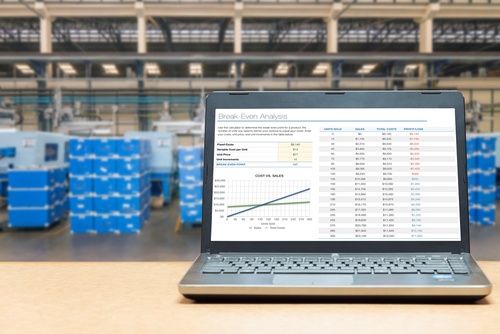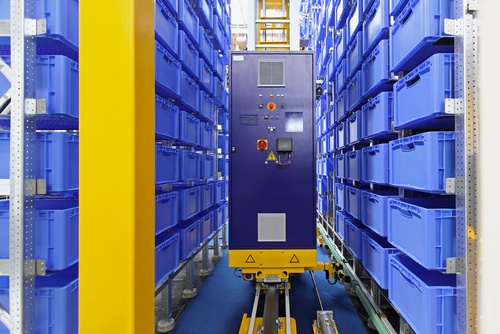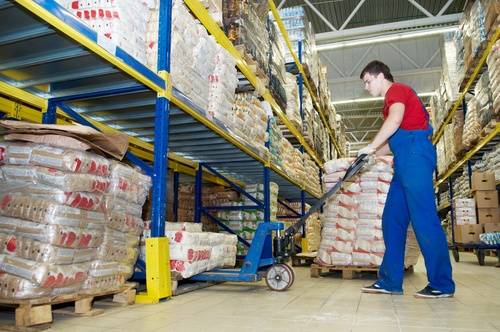There is one truth that shines through all matters of warehouse efficiency: you can't improve your warehouse without measuring your activity. Warehouse replenishment comes with its own set of metrics and guidelines that you should be keeping an eye on. Hopefully, your WMS helps you accomplish this by providing a handy dashboard for tracking trends and important stats.
Tips for Monitoring Warehouse Replenishment Activities
Topics: warehouse replenishment
Warehouse Replenishment Do's and Don’ts
When it comes to managing your warehouse, there are some basic do's and don'ts that you should be aware of. Your replenishment department especially needs to know how to handle materials safely, and how to reduce inefficiencies at every possible turn.
Here are a few major areas for your replenishment team to consider:
Topics: warehouse replenishment
Warehouse Replenishment: Leveraging Common Bin Locations
Having forward picking locations that are periodically replenished out of a bulk zone can boost efficiency greatly. There are some situations though where that strategy leads to inefficiency and duplicated efforts. In these cases, using common bin locations in your forward staging area may be a great way to cut down on contacts and movement of your products. Let's discuss some of these scenarios.
Topics: warehouse replenishment
What’s the Difference Between Warehouse Replenishment and Fulfillment?
Too often we hear managers talking about warehouse replenishment and fulfillment using the terms interchangeably. These two terms actually refer to different parts of your warehouse process, and in order to manage each area of your warehouse effectively, you need to understand what they are and what unique challenges they present. Let's take a look at both warehouse replenishment and fulfillment to get a better grasp of what each term means.
Topics: warehouse replenishment
3 Styles of Warehouse Replenishment
There are three common styles of warehouse replenishment. Each one is used under specific circumstances to meet the demands of your picking team without any unnecessary wait time between orders. The three styles of replenishment are On Demand, Top Off, and Routine. Here's a look at when each of these is most useful:
Topics: warehouse replenishment
Is Warehouse Replenishment a Waste of Resources?
There seems to be an ongoing debate about whether or not warehouse replenishment strategies that break down bulk quantities of certain items and move them to more accessible locations are actually worthwhile, or if they simply over-complicate a process and add labor. It turns out that warehouse replenishment really does work, and it reduces the amount of time it takes to get orders out the door. Here's a breakdown of why warehouse replenishment actually saves you resources.
Topics: warehouse replenishment
Warehouse Replenishment: Determining How and When
There are several ways to approach warehouse replenishment. The traffic on your floor, the size of your team, and the volume of the products you are restocking all play a part in deciding which system is best suited to your needs. You can replenish on demand, or you can replenish using a more opportunistic approach. Here are a few things to consider about how and when you do your warehouse replenishment:
Topics: warehouse replenishment
4 Facts to Know About Day or Wave Replenishment
Many warehouses have adopted the wave model for picking where multiple orders are batched together and released for picking as a single group (the "wave") instead of being released piecemeal. Fewer warehouses have used the wave model for replenishment though. Some warehouse managers debate the pros and cons of wave replenishment. On the one hand, it appears to offer a useful means of labor consolidation, but on the other hand, there is some question as to whether or not it is really relevant with modern real-time order processing. Here's what you need to know:
Topics: warehouse replenishment
Warehouse Replenishment: 4 Best Practices
When it comes to warehouse management, the replenishment tactics you use can make a big difference in whether or not your picking team can succeed later on. The warehouse replenishment strategy is often overlooked in favor of making changes to picking strategies first, but we find that it can have an equal role in the overall success of your business. These four practices can change the way your inventory looks on the ground.
- Use WMS Triggers - Warehouse Management Systems allow you to set individual re-order thresholds by item. As soon as a picker reduces the number of items present below the threshold, the system will automatically begin the process of refilling the location. This ensures that your inventory stays more stable throughout the year and your customers are less likely to find items out of stock due to unexpectedly high sales volume.
Topics: warehouse replenishment
Top Warehouse Replenishment Challenges for Wholesalers
In the world of warehouse replenishment, retailers and secondary distributors often get the most attention because they are closest to the customer in the supply chain. However, wholesalers face a different set of complications when it comes to warehouse replenishment that demand solutions. Many Warehouse Management Systems have been developed with the retailer in mind, leaving wholesalers with limited options for improving their processes, but some WMS programs can be adapted to wholesale use as well.
Topics: warehouse replenishment












